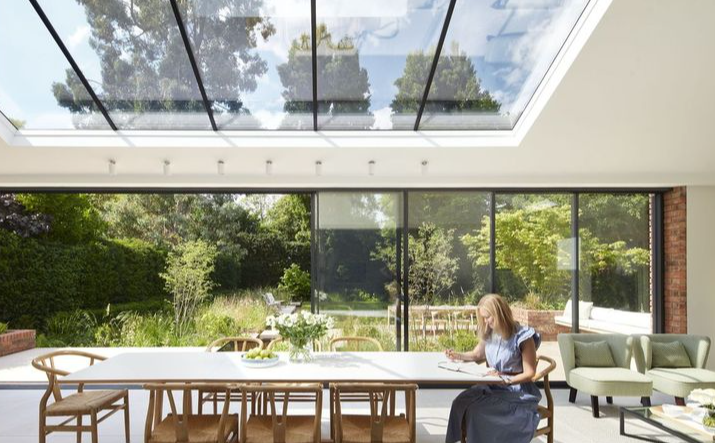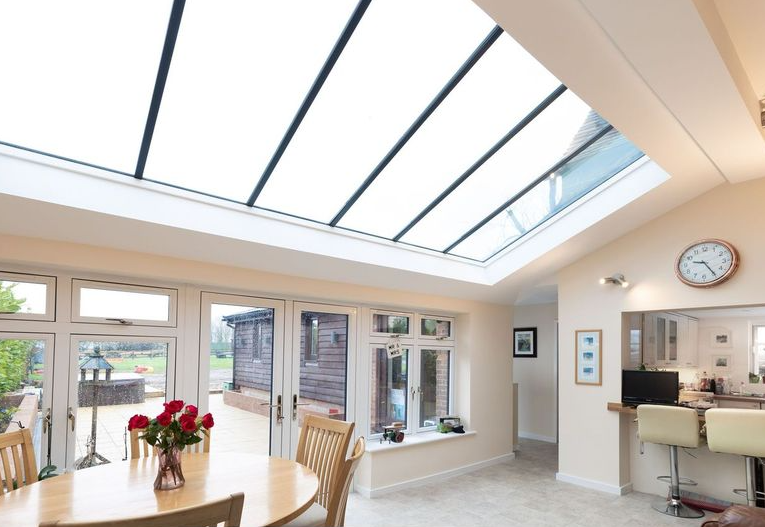Shedding light on conservation rooflights

Paul Trace from Stella Rooflight offers advice on navigating UK Building Regulations and Planning Laws.
In his address to the House of Lords in 1943, Sir Winston Churchill emphasised the profound influence that the built environment has on our lives, advocating for the faithful restoration of the House of Commons following its wartime destruction. “We shape our buildings; thereafter they shape us,” he said. His sentiment underscoring the significance of preserving the character and identity of historic buildings, which form an integral part of our national heritage, evoking a sense of pride and identity among many Brits.
Unfortunately, contemporary construction practices often undermine this heritage by utilising inappropriate materials. The market for rooflights, in particular, frequently showcases substandard, mass-produced, often imported products masquerading as 'conservation' solutions. Despite their allure in terms of cost and claims of performance, these offerings do little to uphold our architectural legacy.
Conservation Rooflights and Building Regulations
In the UK, Building Regulations mandate adherence to specific performance and quality standards for all new constructions, renovations, extensions and conversions. Pertaining to the installation of rooflights these regulations are outlined in Part L (Conservation of Fuel and Power) of the UK Building Regulations Approved Document.

Part L requires that rooflights meet certain thermal performance standards. This means that they must be designed to prevent heat loss and to reduce the need for artificial lighting during the day. For rooflights, the relevant consideration is the thermal transmittance, which is measured as a U-value in units of W/m²K (Watts/meter square Kelvin). The lower the U-value the more efficient the construction is at keeping heat flow through the structure to a minimum. The latest regulations deem the minimum acceptable U-values to be 1.6 W(m2K).
While there may be a temptation to opt for modern products to achieve optimal U-values, there are traditional conservation rooflight designs that comfortably meet these standards while preserving the Victorian aesthetic.
There is also a rather large caveat in respect of thermal performance for conservation properties, with certain exemptions for historic and traditional dwellings. The Approved Document states that the energy efficiency of historic and traditional dwellings should be improved only if doing so will not cause long-term deterioration of the building’s fabric or fittings.
Conservation Rooflights and Planning Permission
Before you need to worry about whether your choice of conservation rooflight meets UK Building Regulations, it is first important to navigate UK Planning Laws, which safeguard a building's character and the architectural integrity of its surroundings.

Generally, installing a rooflight falls under permitted development, obviating the need for planning permission if specific criteria are met. However, further considerations arise when installing conservation rooflights in Listed properties, barn conversions, or structures within designated Conservation Areas, particularly if subject to an Article 4 Direction. Collaboration with Local Planning Authorities is crucial, as additional permissions may be required based on the Conservation Officer's evaluation of the property's original characteristics and its impact on the local context.
In most cases, it is likely that the Conservation Officer will stipulate that your conservation rooflight will need to be of a traditional metal frame construction (rather than a plastic modern alternative) and may require a glazing bar/s. Importantly, it will probably need to sit flush within the roof line in order to minimise any visual impact from ground level.
Provided that your rooflight meets the criteria outlined above, then you shouldn’t have too much trouble specifying and installing a rooflight without any additional planning permissions.
It is highly advisable to reach out to your Conservation Officer (if your Local Authority has one) prior to making any alterations. This step is crucial because there's often ambiguity in these matters, and it's the Conservation Officer who holds the authority to grant consent. Getting things right from the outset is essential and demonstrating a sincere dedication to safeguarding the integrity of the building, a duty we all share as custodians of our architectural heritage, can facilitate the approval process. After all, as Churchill famously said, "The price of greatness is responsibility."
To find out more about conservations rooflights, Building Regulations and Planning Permissions for your project contact the Stella Rooflight team on 01794 745445, email This email address is being protected from spambots. You need JavaScript enabled to view it., or visit www.stellarooflight.co.uk.













